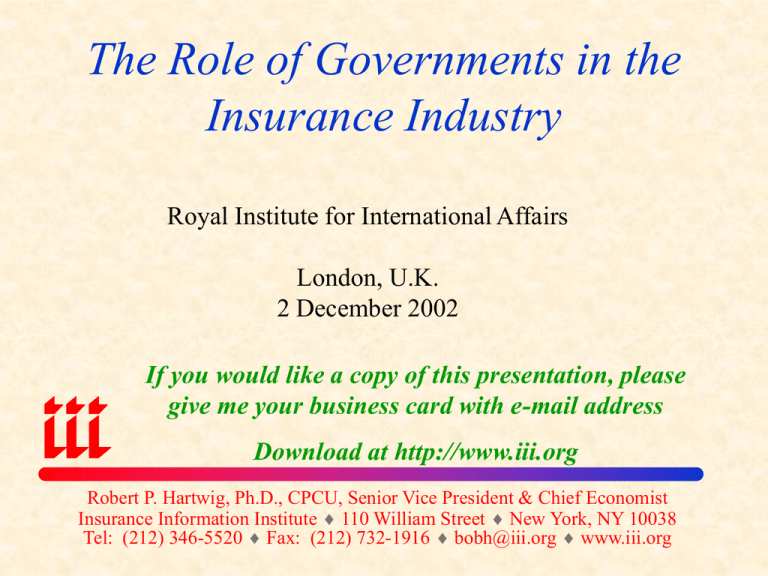The Fundamental Reason For Regulation Of Insurance Is To
The Fundamental Reason for Regulation of Insurance
Insurance plays a crucial role in our society by providing financial protection against various risks and uncertainties. To ensure the stability, fairness, and integrity of the insurance industry, regulatory measures are put in place. The fundamental reason for regulation of insurance is to safeguard the interests of policyholders, promote market efficiency, and maintain the overall stability of the financial system. In this article, we will delve into the key aspects of insurance regulation, its importance, and how it benefits both consumers and insurers.
1. Ensuring Consumer Protection

Consumer protection is at the core of insurance regulation. Regulatory bodies establish rules and guidelines to protect policyholders from unfair practices, misinformation, and fraudulent activities. These regulations ensure that insurance companies fulfill their contractual obligations, provide clear and transparent policy terms, and handle claims efficiently. By enforcing consumer protection measures, regulators instill trust and confidence in the insurance industry, making it more reliable for individuals and businesses.
2. Promoting Market Stability and Fair Competition

The regulation of insurance also aims to promote market stability and fair competition. Insurance companies operate in a marketplace where risks are transferred from policyholders to insurers. To maintain the stability of this market, regulators set capital requirements that insurance companies must meet to ensure they have sufficient financial strength to honor their obligations. Additionally, regulators oversee mergers, acquisitions, and market entry to prevent the concentration of market power and to encourage healthy competition.
3. Addressing Systemic Risks and Financial Stability
Insurance has a significant impact on the overall stability of the financial system. The failure of a large insurance company can have widespread repercussions, affecting policyholders, the economy, and other financial institutions. To mitigate systemic risks, regulatory bodies closely monitor insurance companies' financial health, risk management practices, and investment activities. By implementing strict prudential standards and conducting regular assessments, regulators strive to maintain the stability of the insurance sector and prevent any potential threats to the broader financial system.
FAQs
Q: How does insurance regulation benefit policyholders?
A: Insurance regulation ensures that policyholders are treated fairly, policies are transparent, claims are handled efficiently, and insurers fulfill their contractual obligations. This provides policyholders with a sense of security and confidence in the insurance industry.
Q: How does insurance regulation promote market efficiency?
A: Insurance regulation encourages fair competition, prevents the concentration of market power, and sets capital requirements for insurers. These measures promote market efficiency by ensuring a level playing field for insurance companies, enhancing customer choices, and preventing market failures.
Q: How is the stability of the financial system maintained through insurance regulation?
A: Regulatory bodies closely monitor the financial health, risk management practices, and investments of insurance companies to address systemic risks. By implementing prudential standards and conducting regular assessments, regulators mitigate any potential threats to the financial system, protecting the economy and policyholders alike.
In conclusion, the fundamental reason for the regulation of insurance is to safeguard the interests of policyholders, promote market stability and fair competition, and maintain the overall stability of the financial system. Through consumer protection measures, market oversight, and systemic risk mitigation, regulatory bodies play a crucial role in ensuring that insurance remains a reliable and trusted mechanism for individuals and businesses to manage risks. By upholding these regulatory principles, the insurance industry can continue to serve its fundamental purpose of providing financial protection and peace of mind.
Is Science The Fundamental Reason For Our Existence? If So, Why
 Image Source : xperimentor.science
Image Source : xperimentor.science Regulation - Insurance Information Institute
 Image Source : studylib.net
Image Source : studylib.net The Fundamental Reason House Prices Will Fall This Fall – Now Tec Blog
 Image Source : nowtecblog.com
Image Source : nowtecblog.com Fundamental Reason Of Everything | Ganzorig Ulziibayar
 Image Source : www.youtube.com
Image Source : www.youtube.com Navigate The Regulatory And Compliance Challenges Facing The Insurance
 Image Source : www.americanconference.com
Image Source : www.americanconference.com insurance regulation york metropolitan doubletree hilton ny march
Fundamental Reason Synonyms - 502 Words And Phrases For Fundamental Reason
 Image Source : www.powerthesaurus.org
Image Source : www.powerthesaurus.org Regulation - FactsofIndonesia.com
 Image Source : factsofindonesia.com
Image Source : factsofindonesia.com GNews : The Fundamental Reason Why Communist China Forbids Cryptocurrencies
 Image Source : gnews.org
Image Source : gnews.org Navigate the regulatory and compliance challenges facing the insurance. Gnews : the fundamental reason why communist china forbids cryptocurrencies. The fundamental reason house prices will fall this fall – now tec blog. Is science the fundamental reason for our existence? if so, why. Fundamental reason synonyms